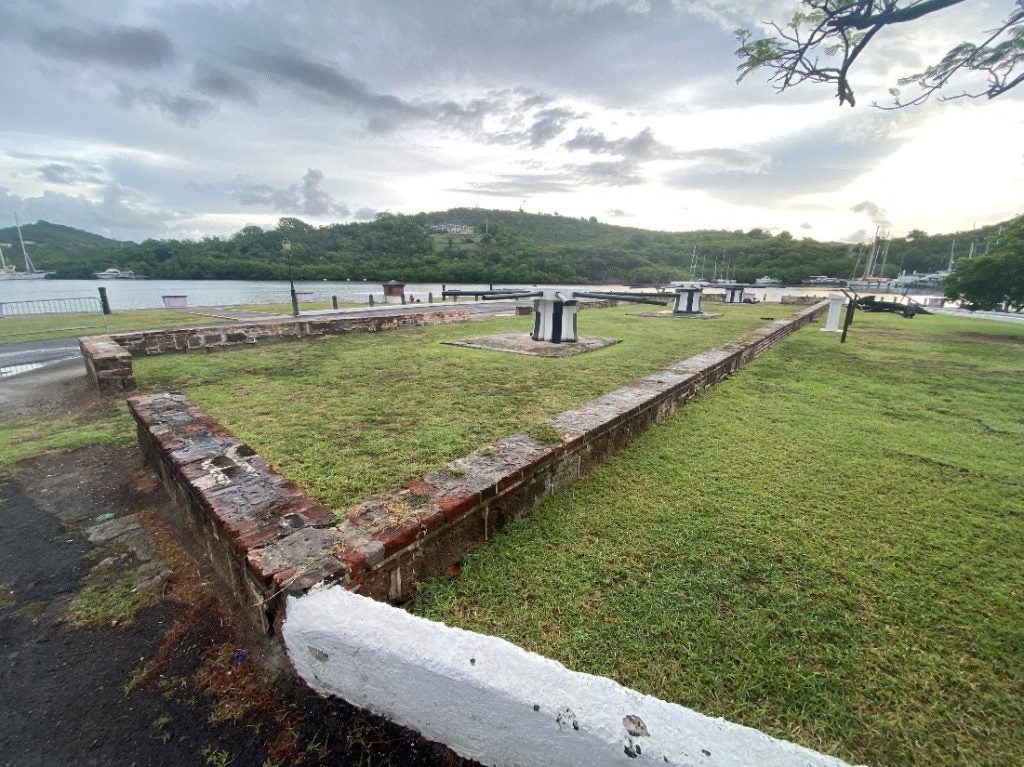English Harbour is home to numerous historic structures within Nelson’s Dockyard National Park, including a capstan house and two heave down blocks. These structures were used to “heave” ships onto their sides for maintenance in a process called careening. To careen vessels, dockworkers attached tackles on ropes to vessels’ mastheads and connected the other ends of the ropes to the three capstans. Dockworkers turned the capstans, pulling the attached vessels onto their sides, coming to rest on the massive blocks. To control the angle of heel and to right the vessel once the cleaning or repairs were complete, tackles were run underneath the keel secured to the heave down blocks. The process was repeated once one side was finished (Dear & Kemp 2005:88).

Figure 1: View of the Capstan House foundation, looking northeast (Photos by Jeremy Borrelli, ECU, 2022). The three capstans and their push-handles are visible in the center.
The capstan house was built in 1807, in the post-and-beam style typical of structures in the dockyard. The ground floor of the interior was left open so the capstans could be spun without impediment. The loft housed the seamen of the vessels being careened. In 1925, a hurricane destroyed the capstan house leaving the low brick foundation line. (NPA 2014).
The heave down blocks’ construction date is unknown, but it preceded the stone Quay’s 1820 construction. The blocks were constructed of locally quarried stone, and each block contained three admiralty longshank anchors. The centermost anchor of each block was positioned with the ring protruding towards careened ships. Tackles were attached to this ring to control the vessels being laid on their side. The other two anchors were positioned in the opposite direction.